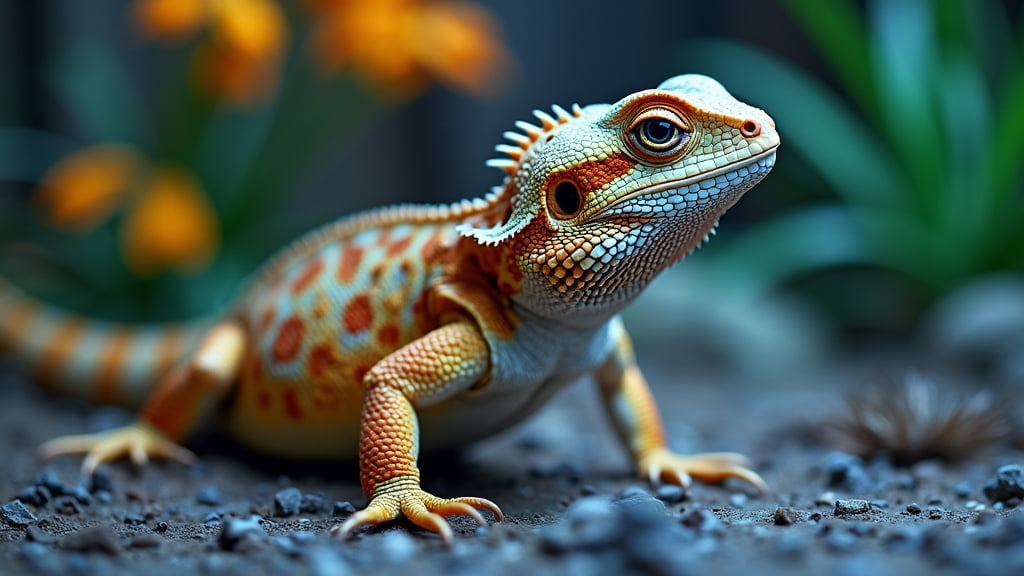Ensuring your bearded dragon has the right UVB lighting is essential for its health and well-being. These lovable reptiles rely on UVB light to synthesise vitamin D3, necessary for calcium absorption. Without it, they could develop metabolic bone disease and other significant health issues. As someone who has cared for multiple bearded dragons over the years, I’ve learned the ins and outs of providing proper lighting. Here’s a comprehensive guide on selecting the perfect UVB bulb for your bearded dragon.
Understanding the Importance of UVB Lighting
What Is UVB Light?
UVB, or Ultraviolet B, is a type of ultraviolet light that helps bearded dragons produce vitamin D3. In the wild, these reptiles bask under the sun, naturally absorbing UVB. In captivity, it’s our responsibility to replicate this environment as closely as possible.
Consequences of Inadequate UVB Light
Inadequate UVB exposure can lead to:
- Metabolic Bone Disease (MBD)
- Fragile bones and limbs
- Decreased appetite and lethargy
- Overall poor health
These problems stem from the inability to absorb calcium without sufficient vitamin D3, highlighting the crucial role of UVB lighting in your bearded dragon’s habitat.
Types of UVB Bulbs for Bearded Dragons
Fluorescent Tube Bulbs
Fluorescent tubes are one of the most common choices for bearded dragon habitats. They are available in:
- T8 Bulbs: These are affordable and widely used but need to be placed within 30 cm of the basking spot due to their lower UVB output.
- T5 Bulbs: These are more powerful than T8 bulbs and can be mounted up to 50 cm from the basking area, making them ideal for larger enclosures.
Pros:
- Even UVB distribution across the tank
- Long-lasting (6-12 months)
Cons:
- Requires a dedicated fixture
- Larger tanks may need multiple bulbs for optimal coverage
Compact Fluorescent Bulbs
Compact fluorescents are a popular choice for smaller enclosures or specific basking spots. They screw into a standard light socket and are simpler to install.
Pros:
- Easy to install
- Suitable for spot UVB lighting
Cons:
- UVB output may not cover the entire tank
- Requires replacement every 6 months
Mercury Vapour Bulbs
Mercury vapour bulbs emit both UVB and heat, making them a dual-purpose solution. They are ideal for larger enclosures and provide intense UVB output.
Pros:
- Combines heat and UVB in one bulb
- Higher UVB output suitable for larger tanks
Cons:
- More expensive than other options
- Generates significant heat that may necessitate adjustments to the tank setup
Factors to Consider When Choosing a UVB Bulb
Enclosure Size
Determine the size of your dragon’s habitat before choosing a bulb. For small enclosures, compact fluorescents or T8 bulbs may suffice. Larger tanks might require T5 or mercury vapour bulbs for adequate UVB distribution.
Distance from the Bulb
The effectiveness of the UVB bulb decreases with distance. T5 bulbs and mercury vapour bulbs can be placed further from the basking spot without compromising UVB exposure, whereas T8 and compact fluorescents require closer placement.
Monitor UVB Levels
Using a UVB meter to monitor the levels in your enclosure ensures that your dragon is getting the appropriate exposure. Regular monitoring can prevent the risks associated with both under and overexposure to UVB light.
Bulb Placement and Maintenance
Proper Setup
Ensure your dragon’s basking spot is within the optimal distance range specified by the bulb manufacturer. Position the bulb above the basking area, without obstructing mesh or glass that could filter out UVB rays.
Regular Replacement
Bulbs degrade over time, reducing UVB output. Follow manufacturer recommendations for bulb replacement intervals:
- Fluorescent Tubes: Replace every 6-12 months
- Compact Fluorescents: Replace every 6 months
- Mercury Vapour: Replace every 6-12 months
Mark replacement dates on your calendar to maintain consistent UVB levels.
Conclusion
Choosing the right UVB bulb for your bearded dragon is a critical component of their care. Each type of bulb has its advantages and considerations, and your choice will largely depend on the size of your enclosure and your specific needs. Remember, regular monitoring and timely replacement of UVB bulbs ensure your bearded dragon remains healthy and happy. Always consult with your vet for any health concerns.
For more information on bearded dragon lighting, visit our internal guide.
Meta Description
Discover the best UVB bulbs for bearded dragons, essential for their health. Learn about different types, proper setup, and maintenance in our comprehensive guide.
This blog post covers everything you need to know about UVB lighting for your bearded dragon. Remember, ensuring your pet gets the right light can make all the difference in their health and happiness. Happy herping!

